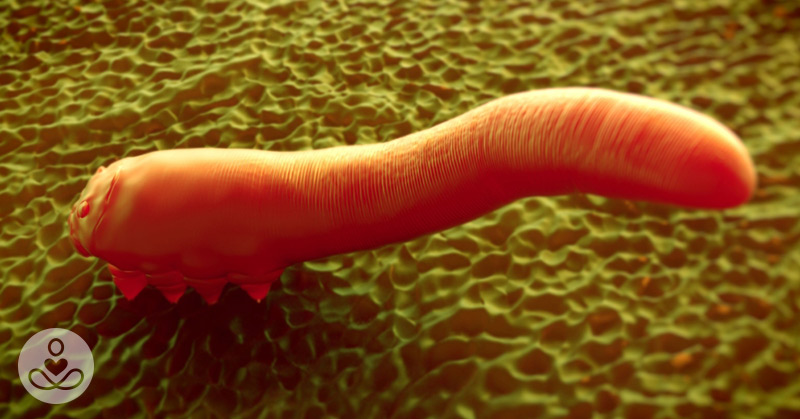Millions of people experience some discomforting itchiness in their eyelashes at some point in their lives, especially when waking up from sleep. It’s normally attributed to grogginess and the presence of fluids in the eye, but unfortunately, it may be worse than that.
One of the possible causes of this discomfort may be the presence of Demodex mites thriving in the facial hair follicles. These mites are commonly found in our lashes and they usually are not a cause for concern. However, when they get out of control they can be an issue for some people. They can also grow anywhere on the face where hair is present, but particularly around the eyelashes, thereby earning them the name eyelash mites.
What Exactly Are These Demodex Mites?
Demodex mites are a group of generic parasites that affect the skin, especially facial skin. There are about 65 species that affect the skin, but Demodex folliculorum is the most likely to thrive in the eyelashes.
These mites have a parasitic association with their hosts, which are mainly mammals ranging from dogs and cats to monkeys and humans. They don’t have the necessary cells, tissues and organs to perform specific life functions. This is why they have a very short two-week lifespan.
Within these two weeks, however, they will survive by eating both the useful and harmful bacteria on our skin. They undergo a process of sexual reproduction to lay eggs before their lifespan is complete.
Eyelash mites in small numbers are not always noticed, but they become a significant source of irritation and discomfort when they begin to reproduce and multiply rapidly.
What Are the Causes of Eyelash Mites?
There are many things that cause the survival of these Demodex mites in the eyelashes.
Lack of proper hygiene could cause a couple of mites to multiply into tens and hundreds. A lot of people neglect the eyelashes when showering, probably afraid of scraping off the few hairs they have up there. This causes the mites to grow and multiply without being disturbed.
Those who wear mascara should also be vigilant. When mascara is not properly washed out or left on the lashes for a very long time, it creates an excellent breeding ground for a variety of germs, especially eyelash mites. Sharing your mascara brush with other women is a sure fire way to catch eyelash mites.
It’s also prevalent in people who have furry pets, such as dogs and cats. Dogs aren’t just breeding grounds for fleas; they also breed mites on their faces and eyelashes.
Symptoms of Eyelash Mite Infestation
Eyelash mites are even thought to play a contributing role in common skin problems such as rosacea. Rosacea is an inflammatory skin condition characterized by redness and visibility of blood vessels in the facial skin. Tiny red bumps filled with pus may also occur in some people. The presence of these mites is greatly manifested in the worsening of eczema and ringworms all around the face, especially areas close to the eyes.
Other symptoms of eyelash mites include:
- Intense itchiness in the eyelashes and the skin around it.
- Inflammation in the skin surrounding the lashes
- Alopecia in the eyelashes
- Swollen skin beneath the eyes
- Rough skin appearing on the face.
Natural Remedies for the Treatment of Demodex Mites
Demodex mites are irritating and upsetting, and thankfully, there are several home remedies for the treatment of their infestation. These remedies can also serve as preventive measures because they help to make the eyelashes inhabitable for these parasites. We’ll be discussing a number of them below.
Baby shampoo
Baby shampoo is good for the eradication of these mites in the eyelashes, especially when they are still in small numbers. It should be used to wash the eyelashes, keeping the eyes tightly closed and rinsing with a lot of water.
Baby shampoo is a fast-action remedy that snuffs the life out of the mites in a couple of washes. The only problem is that it can cause inflammation when the skin around the eyes is already sore from excessive itching.
It’s also not suitable for people with very sensitive skin. People in this category can try out some natural shampoos to find one that doesn’t irritate their skin.
Castor oil
Castor oil is an essential oil gotten from castor beans, and it has wonderful anti-inflammatory properties that help soothe the skin. Castor oil is effective in the treatment of eyelash mites and alopecia.
To use castor oil for this purpose, wash your face thoroughly with mild soap and an exfoliating sponge, making sure to cleanse the eyelashes and lids of any mascara and liner. Dry with a clean towel and apply 100% organic castor oil on the eyelashes, concentrating on the bases because that’s where the mites thrive most.
You can do this with your mascara brush. Apply twice a day for best results. Be careful not to get castor oil in your eyes to avoid irritation, and if this does happen, wash off with plenty of water.
Demodex Mites in Areas Other Than the Eyelashes
When Demodex mites are not thriving exclusively on your eyelashes, there are other remedies you can employ to deal with the menace. Be sure not to use these remedies on your eyelashes, because they’re not suitable for the sensitive skin and should not be brought in close contact with the eyes.
- Olive leaf extract
- Caraway oil
- Dill Oil
- Tea-tree oil
- Oregano oil
In general, maintaining good hygiene will keep these mites away. It is very important to avoid sharing make-up tools especially mascara brushes, so you don’t transfer the mites around.
Many people have these mites and have no issues. However, they can become a problem if the mites gets out of hand. In the end, there may not be much to worry about, but its best to keep an eye out for symptoms and to prevent these mites from lashing out.
Sources
- Alana Biggers. 2017, May 17. Demodex folliculorum: What you should know. Retrieved from healthline.com
- William Blahd, MD. 2017, September 14. What is Rosacea? Retrieved from webmd.com

